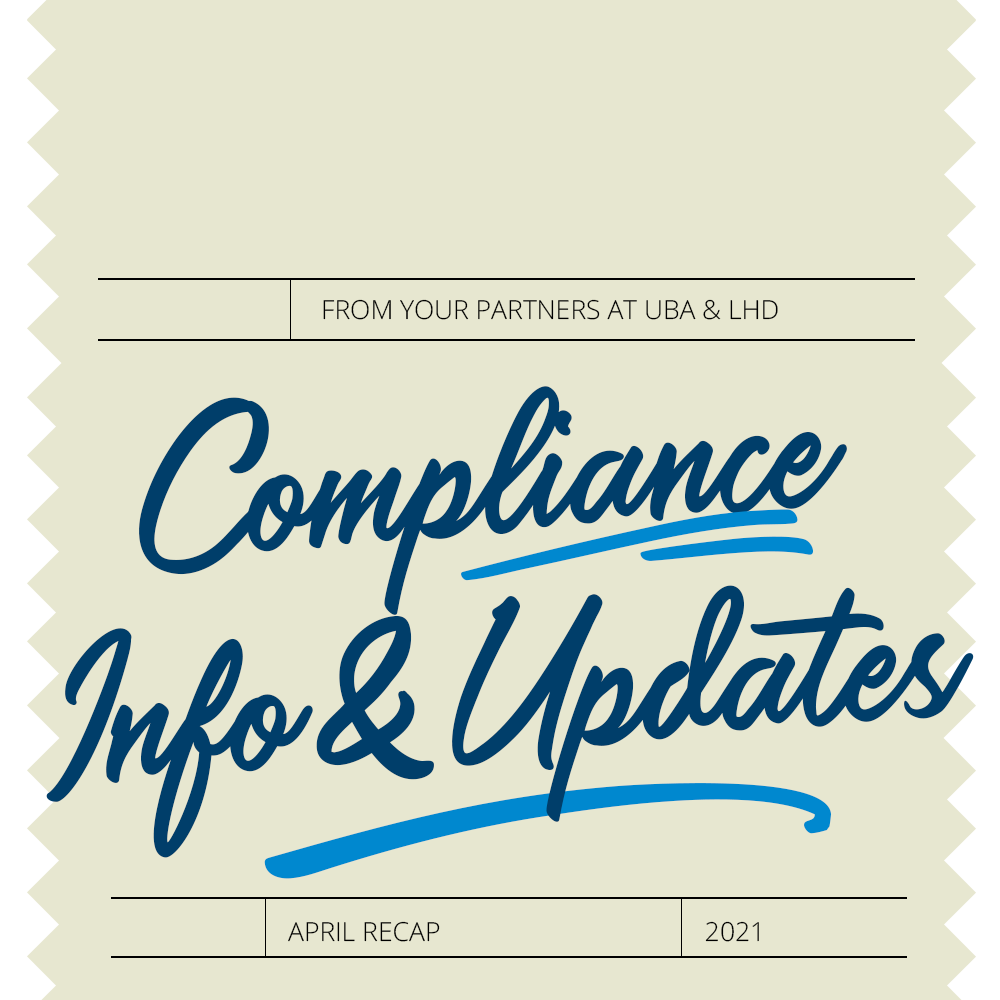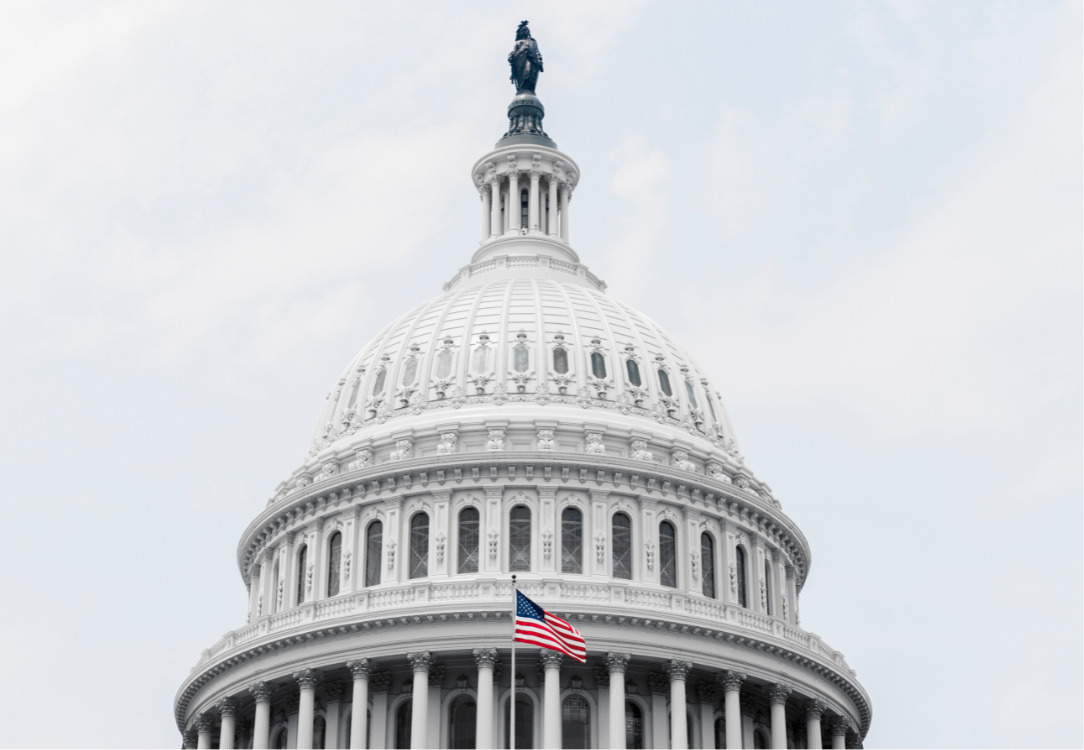Compliance Recap
April was a busy month in the benefits industry, largely due to the temporary 100% COBRA subsidy mandated by the American Plan Rescue Act of 2021 (the ARP). The Departments of Labor, Treasury and Health and Human Services (the Departments) jointly issued FAQs regarding the amendments to the Mental Health Parity and Addiction Equity Act of 2008 (MHPAEA) made by the Consolidated Appropriations Act, 2021, enacted December 27, 2020 (CAA). Additionally, the Biden Administration encouraged every employer in America take advantage of the ARP tax credit by offering full pay to their employees for any time off needed to get vaccinated and for any time it takes to recover from the after-effects of vaccination. The Department of Labor (DOL) also issued important information on self-funded plans.
COBRA Subsidy
The COBRA Subsidy is required to be provided to eligible individuals who have not exhausted the maximum COBRA coverage period as of April 1, 2021, with the ARP extending to those individuals an opportunity to make a COBRA election during a special election period that begins on April 1, 2021, and ends on May 31, 2021. The duration of the COBRA subsidy period is six months, ending on September 30, 2021.
On April 7, 2021, the Department of Labor (DOL), in consultation with the Department of Treasury and the Internal Revenue Service (IRS), issued FAQs written for the benefit of participants and beneficiaries regarding the temporary 100% COBRA subsidy mandated by the ARP. Our Advisor on the FAQs highlights the availability of the subsidy to individuals who previously declined COBRA coverage, new COBRA elections, family member separate elections, among other topics.
In April, the DOL issued COBRA Model Notices implementing the 100% COBRA subsidy for eligible individuals. To assist plan sponsors with implementing the subsidy as required under the ARP, the DOL also established a dedicated COBRA subsidy web page.
Model Notices include:
- General Notice and Election Notice
- Notice in Connection with Extended Election Period
- Alternative Notice
- Notice of Expiration of Premium Assistance
- Summary of the COBRA Premium Assistance Provisions
We anticipate considerable enrollment during the new enrollment period in order for individuals to take advantage of the subsidy. Plan sponsors are encouraged to coordinate with their carriers and other service providers to ensure that all eligible individuals are provided with the opportunity to make a COBRA election during the 60-day period beginning April 1, 2021. The DOL is committed to ensuring that individuals receive the benefits to which they are entitled under the ARP. Plan sponsors may also be subject to an excise tax under the Internal Revenue Code for failing to satisfy the COBRA continuation coverage requirements, which could be as much as $100 per qualified beneficiary, but not more than $200 per family, for each day that the taxpayer is in violation of the COBRA rules. Additionally, noncompliance could result in costly civil litigation. For these reasons, immediate attention to the new rules is required.
MHPAEA FAQs
The MHPAEA generally applies to group health plans and health insurance issuers that provide coverage for either mental health or substance use disorder benefits as well as medical/surgical benefits. The purpose of the MHPAEA is to ensure that plans and issuers treat mental health and substance abuse (MH/SUD) benefits the same as major medical benefits by not imposing restrictions on MH/SUD benefits that don’t apply to other benefits. The MHPAEA final regulations require that a methodology be imposed to analyze whether the non-quantitative treatment limitations (NQTLs) for MH/SUD benefits have parity with those imposed on major medical benefits. The CAA requires plans and issuers to perform and document their comparative analyses of the design and application of NQTLs for MH/SUD and major medical benefits. Effective February 10, 2021 (45 days after enactment of the CAA), plans and issuers must make their comparative analyses available to the Departments upon request. Please review our Advisor for more detail.
Employer Tax Credit for Vaccination Absence
The ARP allows small and midsize employers, and certain governmental employers, to claim refundable tax credits that reimburse them for the cost of providing paid sick and family leave to their employees due to COVID-19, including leave taken by employees to receive or recover from COVID-19 vaccinations. The ARP tax credits are available to eligible employers that pay sick and family leave for leave from April 1, 2021, through September 30, 2021.
An employer eligible for the tax credit includes any business, including a tax-exempt organization, with fewer than 500 employees. An eligible employer also includes a governmental employer, other than the federal government and any agency or instrumentality of the federal government that is not an organization described in section 501(c)(1) of the Internal Revenue Code. Self-employed individuals are eligible for similar tax credits.
Eligible employers are entitled to tax credits for wages paid for leave taken by employees who are not able to work or telework due to reasons related to COVID-19, including leave taken to receive COVID-19 vaccinations or to recover from any injury, disability, illness or condition related to the vaccinations. These tax credits are available for wages paid for leave from April 1, 2021, through September 30, 2021. The paid leave tax credit will offset the cost for businesses and nonprofits with fewer than 500 employees for up to 80 hours (i.e. 10 work days) up to $511 per day of paid sick leave offered between April 1 and September 30, 2021. Please review our Advisor for more detail.
DOL Issues Report on Self-Insured Group Health Plans
The Affordable Care Act requires the Secretary of Labor to provide Congress with an annual report (Report) containing general information on self-insured employee health benefit plans and financial information regarding employers that sponsor such plans, based on the data obtained from Forms 5500. The Report provides information regarding the number of self funded plans for which Forms 5500 were filed, the number of participants, the types of benefits offered by group health plans in addition to aggregate dollar value of self-insured plan assets. The Report provides great insight into the delivery of group health plan benefits on a granular level and is worthy of review.


